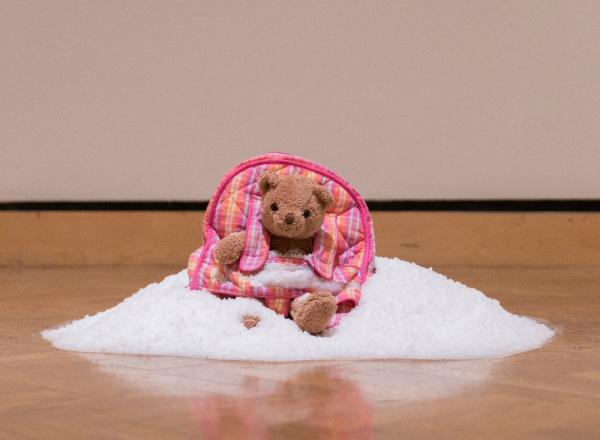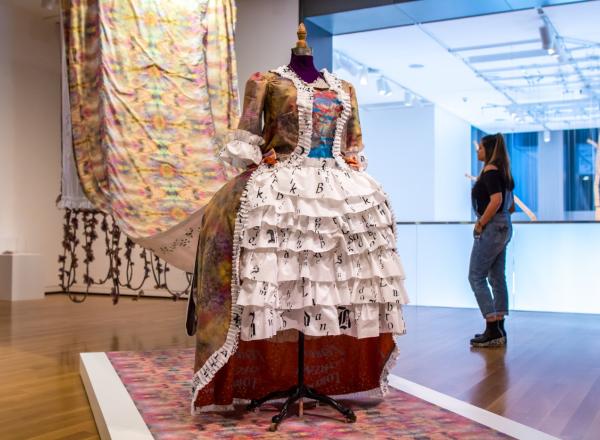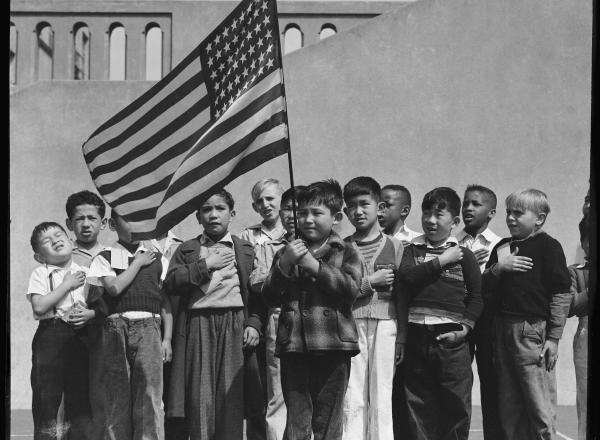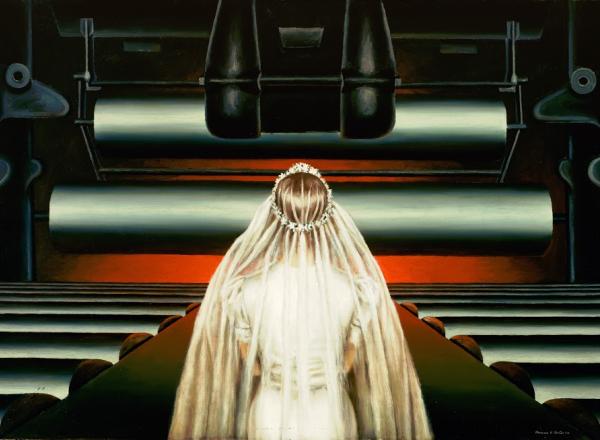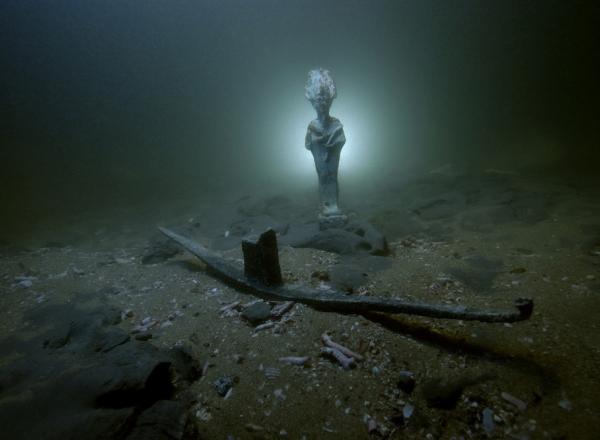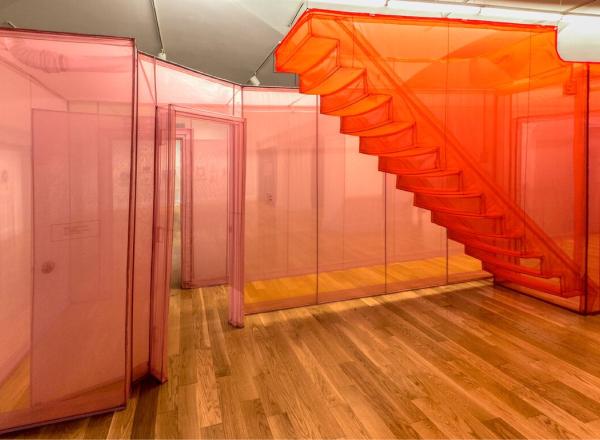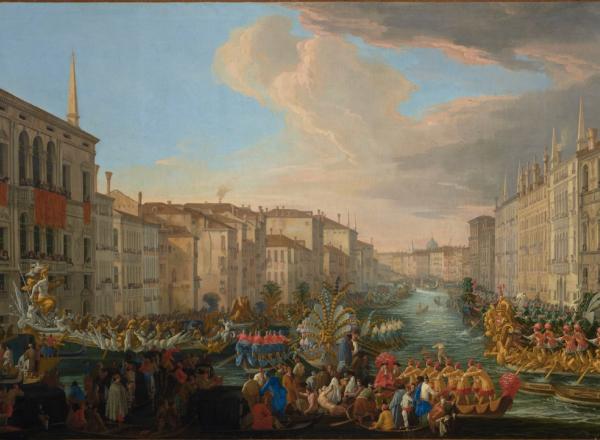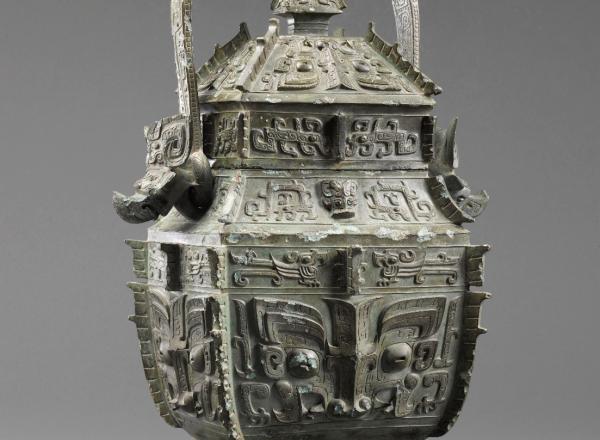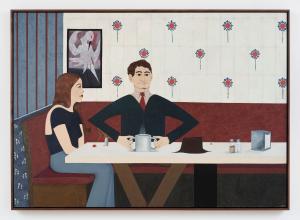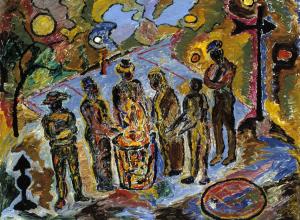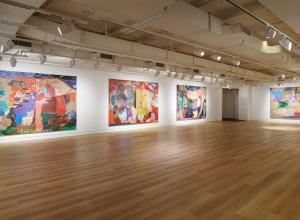Now at the Minneapolis Institute of Art, Essma Imady’s installation, Thicker than Water, is a heart-rending contemplation of the effects of Syria’s civil war and the realities of life as a refugee, including leaving friends and family behind and the strangeness of navigating a new home. Syrian-born Imady moved to the US to get her MFA just before war broke out. Her work explores the tensions and anxieties of refugees and immigrant parents.
Art News
Currently on view at the Seattle Art Museum, three garments from Jono Vaughan’s ongoing series "Project 42" combine beautifully crafted, often elaborate clothing with performance art in a passionate, bittersweet memorial for murdered transgender individuals. Created to raise awareness of the violence faced by transgender people, the artist plans to create 42 of these memorials, referencing the shorter average lifespans of transgender people.
“Then They Came for Me: Incarceration of Japanese Americans during World War II” at the International Center of Photography in New York City is a documentary exposé on a seldom-acknowledged history of American paranoia and racism: it examines the wartime internment of thousands of Japanese-Americans during the Second World War.
“Tarsila do Amaral: Inventing Modern Art in Brazil” is currently on view at the Museum of Modern Art and is the first exhibition of the artist’s work in the U.S. Viewers are immediately introduced to Tarsila (1886–1973) via her cubist education. Indeed, it is important that Tarsila’s career be seen with the understanding that she benefited from extensive European modernist training and mentorship.
Opening this month at the de Young in San Francisco is “Cult of the Machine: Precisionism and American Art.” This comprehensive survey of America’s first homegrown art movement showcases art of the machine age. Known for its clean lines and smooth surfaces, these works celebrated the industrial age and presented a distinctly American point of view. Including decorative arts in addition to painting and photography, "Cult of the Machine" gives an in-depth and scholarly view of this movement that has not seen a major exhibition in 20 years.
Yesterday the Saint Louis Art Museum unveiled a collection of ancient treasures from the sea in “Sunken Cities: Egypt’s Lost Worlds.” On view through September 9th, “Sunken Cities” showcases important artifacts and incredible finds recovered from two ancient Egyptian cities. Submerged for over a thousand years, Thonis-Heracleion and nearby Canopus were rediscovered by underwater archaeologist Franck Goddio and his team. Using clues from the fifth century B.C. Greek historian Herodotus and first century B.C.
Recently opened at the Smithsonian American Art Museum, Do Ho Suh’s ‘Almost Home’ invites us to tour Suh’s ethereal memories. Suh is known for his delicately crafted “fabric architecture” pieces. These large-scale installations are sewn from sheer material, making them both solid, immersive objects, while also being light and transparent enough to appear fragile. In ‘Almost Home,’ Suh has recreated the hallways from several of his homes from around the world. Born in 1962 in Korea, Suh currently splits time between Seoul, New York, and London.
Beginning this month, the Museum of Arts and Design in New York presents a dialogue about immigration in a new format. La Frontera: Encounters Along the Border uses contemporary jewelry to engage new narratives surrounding immigration and life along the US-Mexico border. The fourth stop for this exhibition, including one in Mexico, La Frontera brings together 48 artists from around the world working in a range of media. These intimate objects of adornment personalize a larger dialogue that can often be dehumanizing.
Now at the Cleveland Museum of Art, Eyewitness Views; Making History in Eighteenth-Century Europe uses 40 dramatically staged masterworks to present time-capsules of historical experience. Including work by 18th Century Italian Masters Panini, Canaletto and Guardi, Eyewitness Views is the first exhibition to concentrate on view paintings—faithful depictions of a given locale— as snapshots of historic reality.
Currently at the Art Institute of Chicago, Mirroring China’s Past: Emperors and Their Bronzes, presents exquisitely ornamented Chinese bronzes from the second and first millennia BC. Unlike similar Greek and Roman bronze sculptures, these Chinese Bronze Age objects (about 2000–221 BC) were created primarily for ritual use. Starting with the Song Dynasty (960–1279), Emperors collected these bronzes as symbols of their right to rule.




